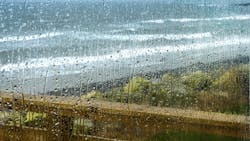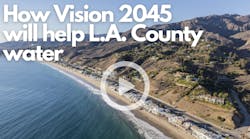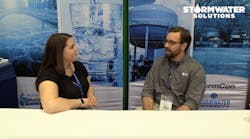I can tell you the condition of almost any bridge in any location in the country with a high degree of accuracy via a portal developed by the Federal Highway Administration known as the National Bridge Inventory. For instance, I can tell you that 192 of the over 16,162 bridges in the state of Alabama are over 100 years old, and I can generate a map showing the ratings of these older structures. This is made possible by significant investments made in the transportation sector to college bridge data, but beyond that, the data gathered is based upon a standardized format that describes how bridges are categorized, rated and named regardless of what state they are located.
The value of the National Bridge Inventory database is that it arms the transportation sector with the data needed to capture the scale and the status of a major segment of its overall infrastructure. In addition, the data is in a standardized format that enables the transportation sector to advocate for funds and other support across the entire country and over long periods of time. It is one thing to have a great volume of data, but this data is more meaningful and impactful if it uses a data schema that is consistent, descriptive and well planned. This enables a sector to better advocate for funding and support as the needs in the sector are clear and compelling. For instance, the overview of the bridges section of the ASCE Report Card reflects the vast amount of descriptive data in this sector, which makes the impact of this Report Card even more powerful for the transportation sector.
To contrast, the stormwater sector is not only data-poor, but the format of this data varies significantly from state to state and jurisdiction to jurisdiction. It is not surprising that this is the condition of data in our sector, as the stormwater sector is relatively young and immature compared with other infrastructure sectors, and until recently, drainage and runoff treatment infrastructure has been considered an “informal” infrastructure by many communities. As the sector has matured, dedicated revenue sources have become established (most commonly through stormwater utilities), efforts to standardized terminology have commenced, and some communities have started down the path of GIS data standardization as well.
The National Municipal Stormwater Alliance (NMSA), along with other organizations, has been working to generate more funding for stormwater programs and infrastructure from the federal level and we will continue to do so in the future, but the fact is that over 90% of funding from sectors such as stormwater, wastewater and drinking water are generated at the local level – point being there is only so much influence we can have on overall funding. But what we can do is to highlight the scale of existing funding levels and the funding gap between these levels and what is necessary to meet regulatory and community goals through our long-time support for the Water Environment Federation’s National MS4 Needs Assessment Survey.
The results of these surveys since 2018 were key to getting stormwater to be included in the 2021 ASCE Infrastructure Report Card. While this financial data is critical in outlining the funding needs in our sector, being able to quantify the scale of assets and the condition of these assets across the country would provide an added dimension of information that we, and others, could use to educate decision makers on the size of our sector in terms of the number of stormwater control measures (SCMs) that have been built, the condition of these SCMs, the volume of treatment provided, the number of miles of stormwater runoff conveyance, and similar metrics. Beyond education, we can use this powerful information to advocate for increased federal funding within the halls of Congress, and we can also take a seat the table alongside our cousins in the wastewater and drinking water sector, as this information will surely illustrate that stormwater, as a sector, is a legitimate infrastructure that should be considered as critical to the health of our waters and safety of our citizens as wastewater and drinking water systems.
What holds us back is the lack of standardization on how we identify, classify, organize, track, and rate stormwater infrastructure assets. If we are to be taken seriously as a sector, we must first take ourselves seriously. This means that we need to go through the effort to develop a stormwater infrastructure asset standard and promote the use of this across the country as it is difficult to make the case for needed funds from the federal and state level if our sector has not done the due diligence that is needed to fully capture the scope, status, and condition of assets within our sector. If we meet this challenge, perhaps one day there will be a National Stormwater Asset Inventory that could be used to provide critical information on our sector as the National Bridge Inventory provides critical information to the transportation sector.






